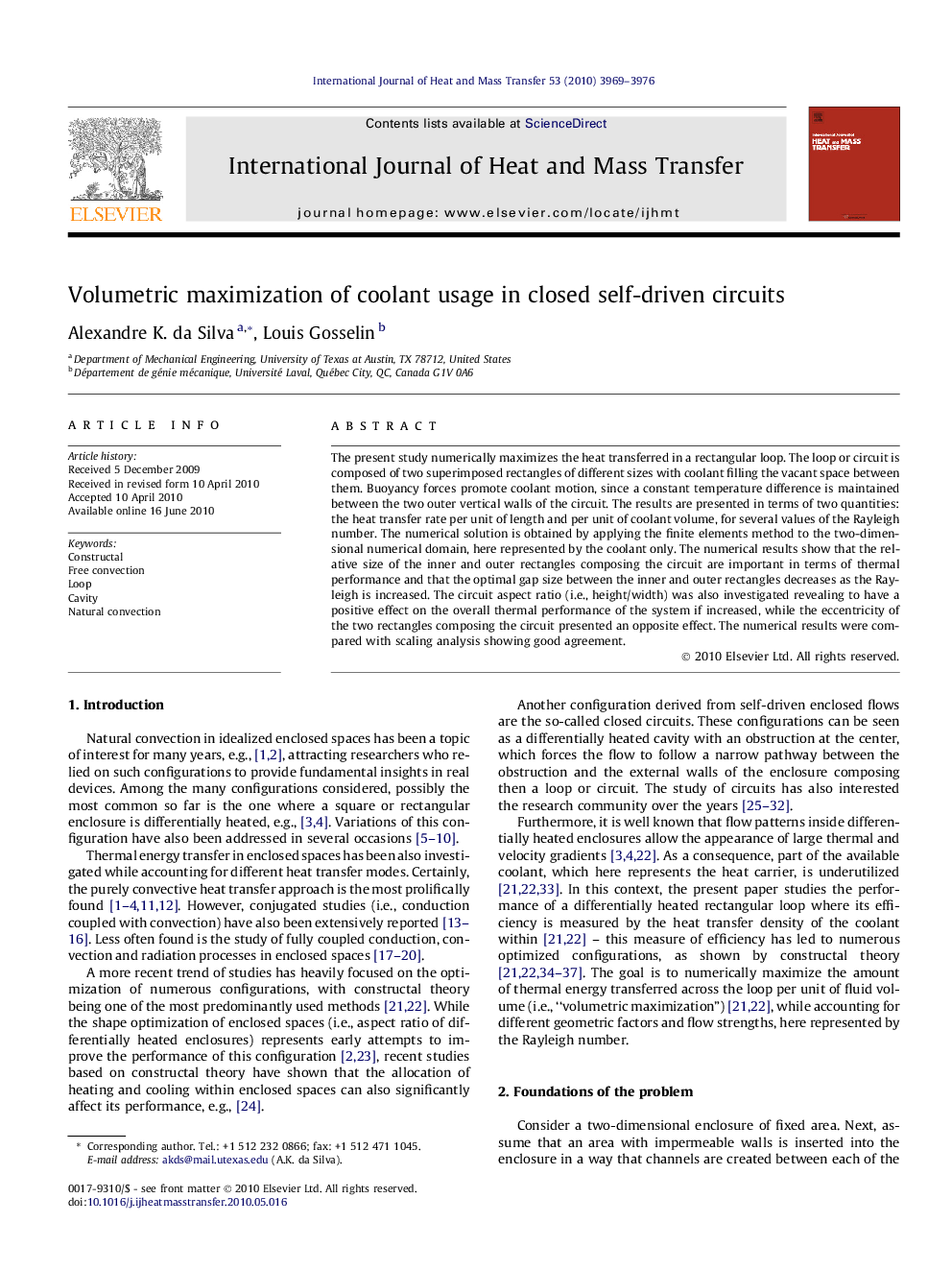| Article ID | Journal | Published Year | Pages | File Type |
|---|---|---|---|---|
| 659869 | International Journal of Heat and Mass Transfer | 2010 | 8 Pages |
Abstract
The present study numerically maximizes the heat transferred in a rectangular loop. The loop or circuit is composed of two superimposed rectangles of different sizes with coolant filling the vacant space between them. Buoyancy forces promote coolant motion, since a constant temperature difference is maintained between the two outer vertical walls of the circuit. The results are presented in terms of two quantities: the heat transfer rate per unit of length and per unit of coolant volume, for several values of the Rayleigh number. The numerical solution is obtained by applying the finite elements method to the two-dimensional numerical domain, here represented by the coolant only. The numerical results show that the relative size of the inner and outer rectangles composing the circuit are important in terms of thermal performance and that the optimal gap size between the inner and outer rectangles decreases as the Rayleigh is increased. The circuit aspect ratio (i.e., height/width) was also investigated revealing to have a positive effect on the overall thermal performance of the system if increased, while the eccentricity of the two rectangles composing the circuit presented an opposite effect. The numerical results were compared with scaling analysis showing good agreement.
Related Topics
Physical Sciences and Engineering
Chemical Engineering
Fluid Flow and Transfer Processes
Authors
Alexandre K. da Silva, Louis Gosselin,
